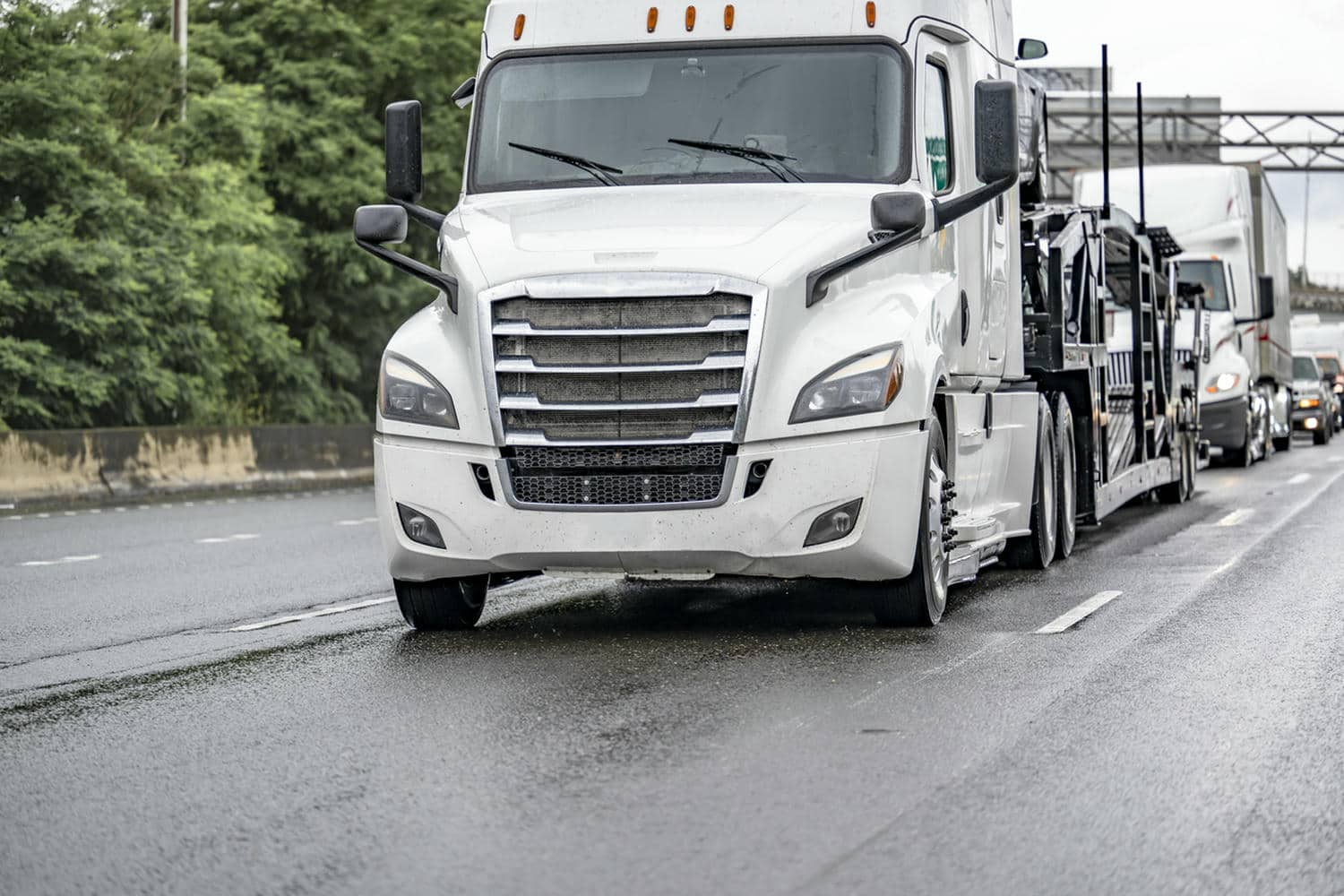Car shipping can is a multi-part process, with many factors contributing to the overall cost of transporting a vehicle across the country. As potential customers look for reliable and affordable service providers, understanding the various elements that affect costs becomes essential. This article provides a comprehensive analysis of the average car shipping prices, breaks down what factors influence costs, and explains the differences between various shipping methods and insurance options. Readers will gain insight into the typical cost ranges, the impact of distance and vehicle type, and how seasonal fluctuations or market demand may change the fee. Whether you are moving to a different state, relocating for business, or simply selling your car while moving, knowing these aspects is crucial for budgeting accurately and avoiding unexpected expenses.
The purpose of this article is to educate individuals and businesses on the principles of freight transportation, particularly for vehicles. It presents practical advice supported by industry data and real-world examples, structured around clear, question-based headings. As you read on, you will find detailed answers to common queries such as the influence of shipping methods on price, the role of vehicle condition in cost determination, and crucial steps to prepare your car for transport in order to prevent extra charges. Moreover, the article includes useful tables and enumerated lists to summarize and compare different aspects of car shipping, ensuring that the information is accessible and actionable.
By exploring the nuances of cost factors—from mileage and wear and tear to market demand and regulatory guidelines—this article offers an essential resource for anyone intending to ship their vehicle. The guidance provided herein not only helps in obtaining accurate shipping quotes but also offers tips on how to compare various service providers to get the best deal without compromising on safety or reliability. As cost transparency is key in making sound logistics decisions, this article acts as an informative guide on navigating the car shipping process effectively.
Transitioning from this overview, the following sections delve into the specifics of average prices, influencing factors, available methods, insurance considerations, and practical preparation tips. Continue reading for more insight on the Average Car Shipping Costs Explained.
- Car shipping costs vary based on distance, vehicle type, shipping method, fuel prices, and seasonality.
- Customers should compare quotes from different carriers and ensure they understand the fine print regarding insurance and additional fees.
- Preparing your car properly before shipping can help avoid extra costs and reduce the risk of damage.
- Understanding the differences between door-to-door and terminal-to-terminal services is crucial for budgeting and convenience.
- Insurance protection is essential to safeguard your vehicle during transit and may affect the total fee.

The average price to ship a car across the country typically ranges between $600 and $1,500, depending on a variety of factors including distance, vehicle size, and shipping method. In many cases, the cost falls around the $800 to $1,200 mark for standard sedans. This price range, however, is only an average estimation and can vary significantly based on specific customer requirements, seasonal changes, and additional service options.
The typical cost range for shipping a vehicle across the United States is influenced by many components. Standard economy car shipping service normally starts at approximately $600 for short distances and can escalate up to $1,500 or more for long distances, such as coast-to-coast moves. Larger vehicles like SUVs, vans, and trucks generally command higher prices due to their increased fuel consumption, weight, and the extra space required on the carrier. In addition, luxury or classic cars may incur additional fees for special handling and enclosed shipping options, designed to protect valuable and delicate exteriors. Customers should also be aware that the price might include mile-based charges, and sometimes additional fees might be applied for limited-access pickup locations or expedited shipping services.
Shipping distance is one of the primary factors influencing the overall cost. Long-haul shipments naturally require more fuel, longer transit times, and increased labor costs. Routes that traverse major highways, urban centers, or toll roads may also add surcharges compared to less congested or rural paths. Furthermore, certain regions might be affected by additional logistical complications, such as road debris or adverse weather conditions, which can further raise the price. Shippers may adjust their rates based on the most efficient route available or even plan multi-stop routes that allow them to group shipments, thereby reducing the individual cost per vehicle.
Vehicle type has a significant impact on shipping costs. Compact cars are generally lighter and more fuel-efficient than other types, making them cheaper to transport. In contrast, larger vehicles, such as SUVs, vans, and trucks, are heavier and require more space on the carrier, leading to increased prices. Additionally, exotic or luxury vehicles often need to be shipped in enclosed carriers to protect their high-value finishes and delicate interiors. The complexity of the vehicle—such as its dimensions, curb weight, and ease of loading—also plays a role in determining the fee. In summary, while the base shipping price might be similar, the vehicle-specific adjustments ensure that every car is handled safely and efficiently.

Multiple factors contribute to determining the final cost of shipping a vehicle. Factors include the shipping method, seasonality, fuel costs, market demand, and the overall condition of the vehicle. Each component plays a role in influencing the final quote, making it crucial for potential customers to consider these variables carefully.
The shipping method chosen is one of the most influential factors on cost. For example, open carrier shipping is generally less expensive than enclosed carrier transport. Open carriers involve vehicles being exposed to the elements, which is acceptable for standard vehicles but may not be suitable for high-value cars. Enclosed carriers, while offering extra protection from road debris, weather, and other potential hazards, cost significantly more. Additionally, terminal-to-terminal services often cost less than door-to-door shipping because they require the shipper and receiver to transport the vehicle to and from designated terminals. These various shipping methods allow customers the flexibility to balance cost with protection and convenience based on their specific needs.
Seasonality plays a key role in pricing due to fluctuating demand and environmental challenges. During peak moving seasons, typically in the summer months, higher demand for shipping services can drive up costs significantly. Conversely, winter months might see lower prices, but adverse weather conditions such as snow, ice, and limited daylight can slow down transit times and introduce additional safety measures, thereby potentially adding risks that carriers must account for with additional fees. Understanding these seasonal trends can help customers plan their shipping schedule at a time when costs are most favorable, without sacrificing service quality.
Fuel prices are directly linked to shipping costs because carriers must manage fluctuating fuel expenses. When fuel prices spike, carriers generally pass these cost adjustments on to the customers. Market demand is another variable factor; during holidays or mass relocation periods, higher demand can result in increased rates, much like surge pricing in the transportation industry. Carriers may also adjust pricing based on localized economic conditions and supply chain demands. In this context, both external economic conditions and trends in energy prices are crucial to understanding the final fee a customer might incur.
The condition of the vehicle being shipped is an often-overlooked yet crucial factor. Vehicles that are not running or are in poor condition require special equipment or handling, which adds an extra cost. For example, if a car has mechanical issues or is missing parts, it might need additional labor or even specialized transport arrangements. Similarly, classic or vintage vehicles that require bespoke handling due to their delicate condition can incur higher fees. Overall, ensuring that the vehicle is in good, operational condition can prevent unexpected charges and facilitate a smoother shipping process.

Several car shipping methods are available, each offering distinct advantages and trade-offs in cost, speed, and level of protection. Understanding these methods is essential for making an informed decision tailored to your specific needs and budget. The most common methods include door-to-door shipping, terminal-to-terminal services, and expedited shipping options.
Door-to-door car shipping is a convenient option where the carrier picks up the vehicle from your designated address and drops it off at your destination. This method minimizes the hassle for customers who lack the time or resources to drop their vehicle off at a terminal. The cost for door-to-door shipping tends to be higher because it requires additional driving time and local fuel consumption. However, the added convenience of home pickup and delivery can justify this premium fee, especially for those with busy lifestyles. Moreover, this service often includes personalized scheduling that can accommodate specific customer needs.
Terminal-to-terminal shipping requires customers to drop off and pick up their vehicles at designated shipping terminals. This method is generally less expensive since it reduces the “last-mile” delivery costs associated with door-to-door service. By consolidating multiple shipments at a single location, carriers can optimize their routes and operating efficiency, translating to cost savings that are passed on to the customer. Although this method requires additional effort on the part of the customer, the significant reduction in cost often makes it an attractive option, particularly for budget-conscious shippers.
Expedited car shipping is designed for situations where the vehicle is needed urgently. This service prioritizes speed over cost, meaning that customers receive their vehicle much faster than through standard shipping options. However, the premium convenience comes with a higher cost. Factors such as limited availability of expedited service, increased labor, and additional fuel consumption contribute to a substantial price hike. Typically, expedited shipping fees can be 50% or more above standard rates. This method is best reserved for situations where delivery time is critical, such as time-sensitive moves or when the vehicle must be present for an important event.

Obtaining an accurate car shipping quote involves gathering precise details about your vehicle and shipping requirements, then comparing offers from multiple providers. A reliable quote will include all the variables—such as distance, shipping method, vehicle type, and any extra services—that might affect the price. By knowing what information to provide and how quotes are calculated, customers can avoid hidden fees and ensure cost transparency.
When requesting a car shipping quote, you need to provide detailed information that allows the service provider to estimate the cost accurately. This information typically includes the vehicle make, model, and condition; the pickup and drop-off addresses; and the desired shipping method (door-to-door or terminal-to-terminal). Additionally, it is important to specify any urgent scheduling needs or special handling requirements, such as enclosed transport for luxury vehicles. Providing precise details reduces the chances of encountering unexpected costs later in the process.
Car shipping quotes are calculated by taking into account several key factors. These include the total mileage between pickup and destination points, the type of vehicle being shipped, the chosen shipping method, and current fuel prices. Carriers may also incorporate seasonal surcharges, insurance premiums, and fees for additional services like expedited delivery or pickup from remote locations. The overall formula used typically combines a base rate with variable factors that reflect the specifics of each individual shipment. This ensures that the quote reflects current market conditions as well as the unique needs of the customer.
Comparing quotes requires looking beyond just the bottom-line price. Customers should review the details of what each quote includes, such as pickup and delivery times, insurance coverage, and any additional fees or surcharges. Reputable providers will offer transparent pricing structures with no hidden costs. A good practice is to obtain at least three quotes and compare them side by side. Additionally, reading customer reviews and checking the provider’s ratings with organizations like the Better Business Bureau helps in distinguishing between companies that offer reliable service and those whose lower prices might come at the expense of quality.

Car shipping insurance is a critical aspect that protects your vehicle during transit. It not only safeguards against unforeseen damage but also plays a role in determining the shipping cost based on the level of coverage required. Knowing the types of insurance available and the steps to protect your car is essential for anyone shipping a vehicle.
There are primarily two types of insurance available for car shipping: basic liability insurance and full coverage insurance. Basic liability insurance covers damages incurred during loading and unloading, but it may not cover damages that occur on the road. Full coverage insurance, on the other hand, offers comprehensive protection, including damage from accidents, weather-related events, and other unforeseen incidents. Some companies may also offer additional riders or add-ons for extra assurance, especially for high-value or exotic vehicles. The cost of insurance is typically added to the base shipping fee, so selecting the appropriate coverage is a balance between cost and potential risk.
Protecting your car during transport involves both choosing the right insurance and taking preventive steps before shipping. Preparing the car includes a thorough cleaning, detailed photographic documentation of its condition, and ensuring that all personal belongings are removed from the interior. The service provider might also recommend additional security measures such as anti-theft devices or extra padding if the vehicle is particularly vulnerable. Ensuring that the car is in good working condition minimizes the risk of operational damage during loading and unloading. All of these steps contribute to a safer shipping experience and can sometimes result in lower insurance premiums if the provider sees that the vehicle is less likely to suffer damage.
If damage occurs during shipping, the first step is to document the damage extensively through photographs and detailed notes. Then, contact the shipping company immediately to report the issue in writing. Review the terms of your insurance policy to understand the coverage limits and claims process. File a claim promptly, providing all necessary evidence, including pictures, receipts, and a copy of the shipping contract. Prompt action is essential, as delayed reporting may result in reduced claim compensation or even a denial. The company’s customer service should guide you through the claims process to ensure fair resolution.

Common questions regarding car shipping costs often revolve around ship duration, affordability, and safety. Customers frequently wonder how long the shipping process will take, what the cheapest available options are, and whether the process is reliable and secure. Addressing these questions in detail helps customers to plan their moves without unexpected delays or hidden fees.
Shipping times vary based on distance, the chosen shipping method, and external conditions such as weather. In general, shipping a car from one coast to the other typically takes about 7 to 10 days. Shorter routes might be completed in less than a week, while more difficult routes or expedited services might either accelerate or extend the timeline. It is essential for customers to get an estimated transit time from their provider and to consider factors such as potential delays due to road conditions or seasonal weather issues.
The cheapest option usually involves terminal-to-terminal shipping combined with standard (non-expedited) services. This method allows carriers to consolidate shipments, which significantly reduces overall costs. Open carrier shipping is another cost-saving option; however, it may expose the vehicle to the elements. Customers seeking low-cost options must balance price with convenience and security and verify that the lower cost does not come with hidden charges or significantly lower levels of insurance coverage.
Car shipping is generally safe and reliable provided you choose a reputable company. Most established carriers are fully insured and have stringent procedures in place to protect vehicles during transport. Thorough research, including verifying licenses and reading customer reviews, can help ensure that the service provider is trustworthy. Additionally, transparent communication regarding shipping timelines, insurance details, and contingency plans further enhances the overall safety of the process.

Proper preparation of your car before shipping is essential to avoid extra fees and ensure that your vehicle is delivered in the same condition that it was dispatched. From a detailed inspection to securing personal belongings, thorough preparation minimizes the risk of damage and unexpected charges. Following a comprehensive checklist is key to a smooth shipping experience.
A detailed pre-shipping inspection checklist is vital. This list should include checking the tire pressure, ensuring that the fuel tank is no more than a quarter full, examining brakes and fluid levels, and noting any existing damage. Additionally, it is advisable to take detailed photographs of both the exterior and interior of the car. These photographs serve as evidence in the event of a dispute regarding damage incurred during transit. Such documentation not only supports insurance claims but may also expedite the resolution process if discrepancies arise.
Preparing your car for transport involves several practical steps. Remove all personal belongings from the vehicle, ensuring that nothing is hidden in compartments that may affect its balance or safety during transport. Clean the car thoroughly to make any damage more evident during inspection. Secure loose parts or accessories, such as spoilers or bike racks, which could become hazards during transit. Following these steps will help avoid rejection of your shipment due to unapproved modifications or unintentional damage caused by unsecured items.
Before shipping day, it is crucial to confirm all arrangements with the chosen shipping provider via a final phone call or email. Review the contract terms and ensure that all details, including pickup and delivery schedules, are clearly defined. Verify that the vehicle inspection has been conducted and documented properly. Additionally, plan for any necessary travel to the shipping terminal if you have opted for terminal-to-terminal service. This proactive approach will help mitigate potential issues on shipping day and reduce the likelihood of incurring additional fees for delays or complications.

Below are several detailed lists that further elaborate on important elements related to car shipping.
- Distance and Mileage – Longer distances require more fuel and labor, which increases the base cost. Costs often rise incrementally per mile, and carriers may implement tiered pricing models based on distance brackets.
- Vehicle Size and Type – Larger vehicles, such as SUVs and trucks, cost more to ship due to increased weight and spatial requirements compared to compact cars. Luxury or classic cars also incur higher costs for protective shipping methods.
- Shipping Method – Open carriers are the most economical, while enclosed carriers command a premium for protecting valuable or delicate vehicles. Terminal-to-terminal shipping further offers cost savings compared to door-to-door services.
- Fuel Prices and Economic Conditions – Fluctuating fuel costs directly impact shipping charges. In times of high fuel prices, the overall fees will be adjusted to compensate for increased operating expenses.
- Seasonality and Demand – Peak moving seasons and holidays generally see increased rates due to higher demand, whereas off-peak times may offer lower rates but potential risks from weather conditions.
- Insurance Coverage Level – Comprehensive insurance coverage adds to the cost; however, it is essential for protecting your car against potential damage during transit.
- Additional Service Fees – Extra charges, such as expedited shipping, remote area pickups, or storage fees for delays, can significantly influence the final invoice.
- Vehicle Registration – Proof of ownership helps verify the vehicle’s identity and legality for shipping.
- Detailed Vehicle Information – Description including make, model, year, and current condition assists in accurate pricing.
- Photos Documentation – Pre-shipping photos provide evidence of the car’s condition and help in insurance claims if damage occurs.
- Pickup and Delivery Addresses – Specific locations determine route efficiency and potential third-party fees.
- Preferred Shipping Method – Indicating door-to-door or terminal-to-terminal options influences the overall quote.
- Desired Shipping Date – Scheduling requirements help carriers manage load and adjust pricing based on demand.
- Insurance Preferences – The level of added protection, such as basic or full coverage, alters the total cost.
Shipping Method | Cost Range | Protection Level | Transit Time | Convenience | Additional Fees | Typical Use Case |
|---|---|---|---|---|---|---|
Open Carrier Shipping | Low ($600–$1,000) | Moderate (exposed vehicle) | 7–10 days | High (door-to-door available) | Additional fees for remote pickup | Standard vehicles, cost-sensitive moves |
Enclosed Carrier Shipping | High ($1,200–$1,800) | High (full protection) | 7–12 days | High (door-to-door available) | Often include insurance upgrade | Luxury or classic cars needing premium protection |
Terminal-to-Terminal | Low to Moderate ($500–$1,200) | Varies (dependent on terminal care) | 8–11 days | Moderate (requires drop-off/pick-up) | Lower fuel surcharges | Budget-conscious customers willing to travel to terminals |
Expedited Shipping | Premium (50% higher than standard) | High with rapid handling | 3–5 days | High (urgency-focused) | Premium for speed | Time-sensitive moves or urgent deliveries |
Flat-Rate Shipping | Fixed Pricing (varies by carrier) | Varies with insurance add-on | 7–10 days | High if pre-arranged | May include fuel and handling fees | Simplified pricing for straightforward moves |
Customized Shipping | Variable | Custom (tailored insurance and handling) | Variable | Highly customized | Fully transparent per request | Unique or oversized vehicle shipments |
Multimodal Shipping | Moderate to High ($800–$1,500) | High when combining modes | Variable | High if part of integrated service | May include coordination fees | Long-distance shipments with intermodal transfers |
Preparation Item | Purpose | Benefit | Verification Method | Expected Outcome | Time Required | Importance |
|---|---|---|---|---|---|---|
Comprehensive Cleaning | Remove dirt & debris | Easier damage detection post-shipping | Visual inspection, photos | Cleaner, damage-evident vehicle | 30-60 minutes | High |
Detailed Photos Documentation | Record pre-shipping condition | Essential for insurance claims | High-resolution images | Clear evidence of condition | 15-30 minutes | Very High |
Fuel Level Adjustment | Ensure optimal fuel level | Reduces weight and risk during transit | Check fuel gauge | Less than 1/4 tank filled | 5 minutes | Medium |
Removal of Personal Belongings | Prevent loss or damage | Avoids additional charges for storage | Car interior inspection | Vehicle is empty inside | 10-15 minutes | High |
Secure Loose Accessories | Prevent damage during movement | Protects enhancements & additions | Visual inspection | Items are fixed or removed | 10 minutes | Medium |
Check Tire Pressure and Fluid Levels | Safety during loading/unloading | Maintains operational safety | Gauge and dipstick inspections | Optimal levels are confirmed | 10 minutes | High |
Final Inspection and Documentation | Confirm overall condition | Avoids disputes over damage | Checklist review, updated photos | Condition verified, ready for shipping | 20-30 minutes | Very High |

Q: What factors most influence the average cost to ship a car? A: The main factors include the distance between the pickup and delivery points, the type and size of the vehicle, and the selected shipping method. Additional elements such as fuel costs, seasonal demand, and insurance options further influence the price. A comprehensive quote will take all these factors into account, ensuring that the customer pays a fair rate based on their specific requirements.
Q: How can I ensure I receive an accurate shipping quote? A: To obtain an accurate quote, you should provide detailed information regarding your vehicle’s specifications, the pickup and delivery locations, and your preferred shipping method. Including photos and any special requirements will help the carrier give a precise estimate. Comparing at least three quotes from reputable carriers can also reveal the best deal and prevent hidden fees.
Q: Is it cheaper to use terminal-to-terminal shipping compared to door-to-door service? A: Generally, terminal-to-terminal shipping is less expensive since it eliminates the cost associated with the last-mile delivery. However, this method requires you to drop off and pick up your vehicle at designated terminals, which might be less convenient. Customers should weigh cost savings against the ease of door-to-door service to determine which option is best for their situation.
Q: What is the significance of shipping insurance in car transport? A: Shipping insurance is essential as it protects your vehicle against damage during transit. It influences the overall cost by adding a premium to the base shipping rate but minimizes financial risk in the event of an accident or damage. Choosing the right level of insurance ensures that you receive adequate protection without incurring excessive fees.
Q: How should I prepare my car to avoid extra shipping costs? A: Prior to shipping, ensure your car is thoroughly cleaned, documented with detailed photos, and free of personal belongings. Check that all loose accessories are secured and that the vehicle is in good working condition. This proactive preparation helps avoid additional fees related to damage disputes or re-inspection requirements and guarantees a smoother shipping process.
Q: How do seasonal trends impact car shipping prices? A: Seasonal trends can significantly impact shipping prices due to varying demand levels. For instance, summer months often see higher rates due to peak moving season, while winter might offer lower rates but come with higher risks from adverse weather conditions. Planning your shipment during off-peak times can help reduce costs, although it is important to consider potential delays.
Q: What is the typical transit time for shipping a car across the country? A: Transit times generally range from 7 to 10 days for cross-country shipments. Factors such as distance, selected shipping method, and weather conditions can influence the timeline. Expedited options are available for urgent deliveries but will come with a higher premium. Confirming the estimated delivery time with your chosen service provider is always recommended.

In summary, the cost to ship a car across the country is influenced by a combination of distance, vehicle characteristics, shipping method, and market conditions. Understanding how each factor—from fuel prices to seasonal demand—affects pricing helps customers make informed decisions. The various shipping methods, including door-to-door, terminal-to-terminal, and expedited services, offer different balances of cost, convenience, and protection. By preparing your vehicle thoroughly and gathering complete documentation, you can secure an accurate quote and avoid unwelcome surprises in pricing. Moving forward, comparing reputable providers and understanding their insurance offerings will ensure that your car shipping process is safe, efficient, and cost-effective.
When it comes to shipping a car, understanding the true cost is just the beginning—what really matters is choosing a trusted partner who ensures transparency, reliability, and peace of mind. Ship A Car, Inc. stands out as the top choice for auto transport by offering honest, all-inclusive quotes with no hidden fees, unmatched customer service, and a nationwide network of fully insured carriers. Whether you’re relocating across the country, buying or selling a vehicle, or just need a reliable shipping solution, Ship A Car’s experienced team guides you through the entire process—from quote to delivery. Their commitment to safety, flexible shipping options (like open, enclosed, and expedited), and seamless coordination makes them the smarter choice over competitors. Don’t leave your vehicle in the wrong hands—call Ship A Car, Inc. today at (866) 821-4555 to get a custom quote or use the online auto transport calculator for a fast, accurate estimate.
*All data and car shipping rates found in this article are accurate at time of publication and subject to change.




